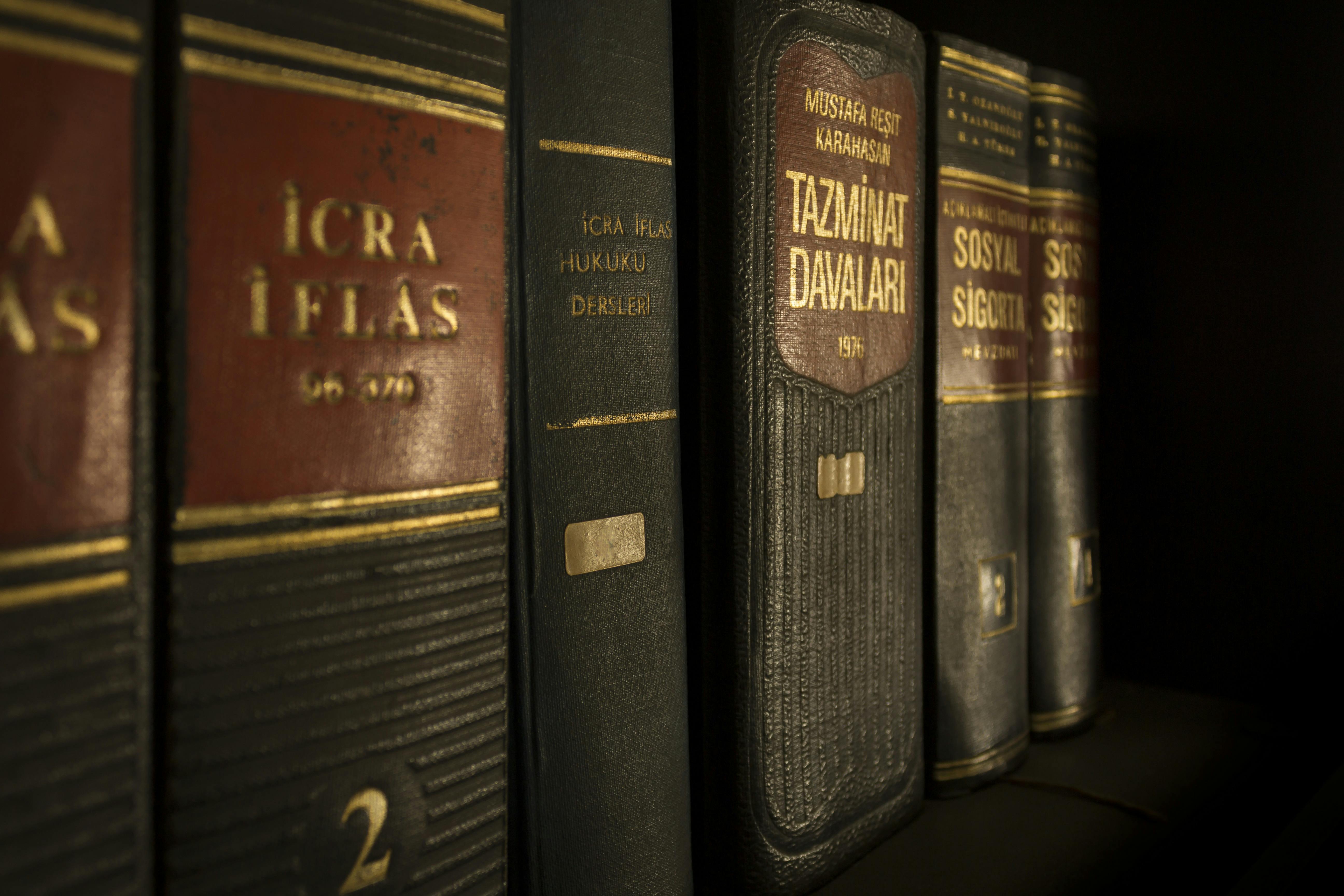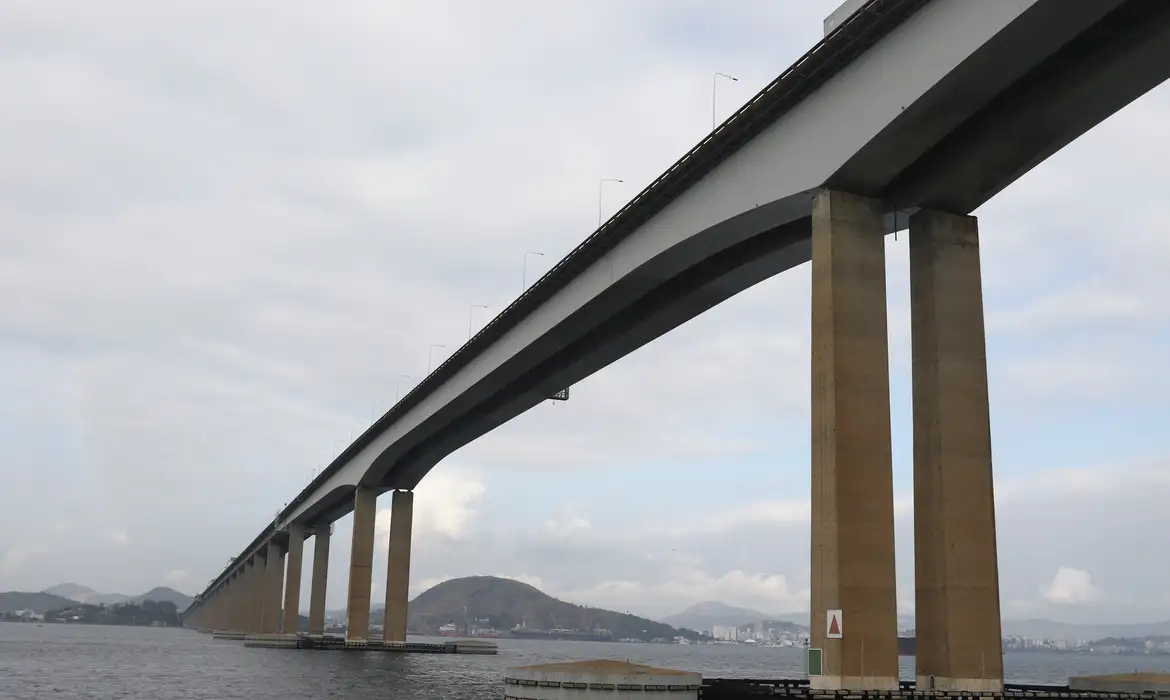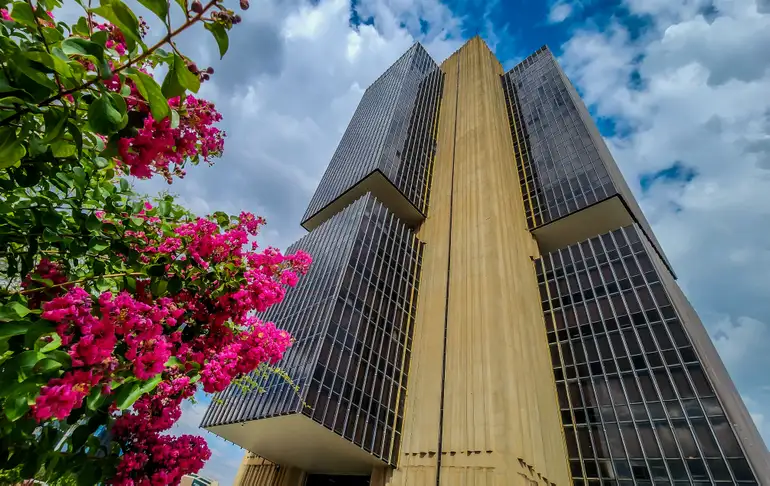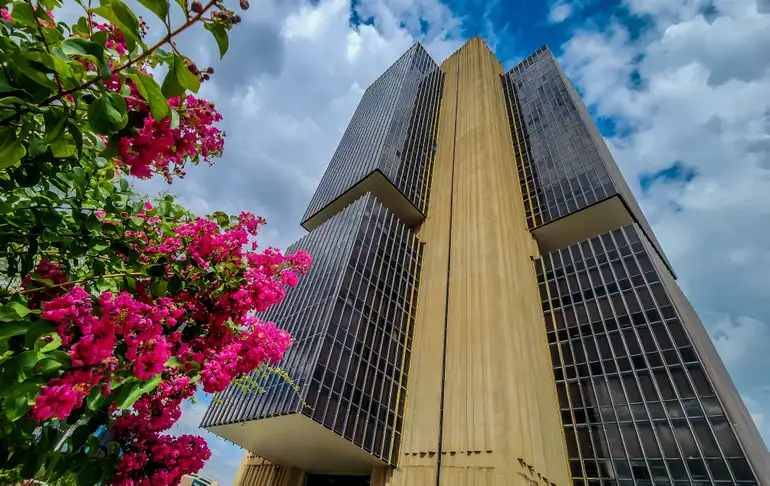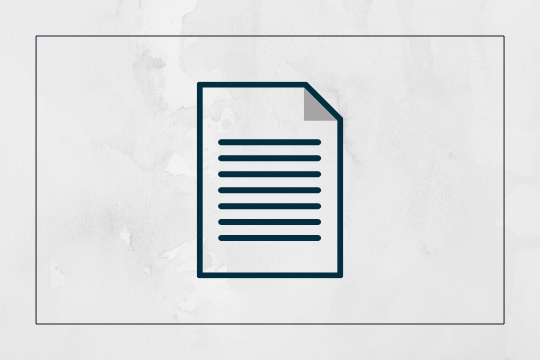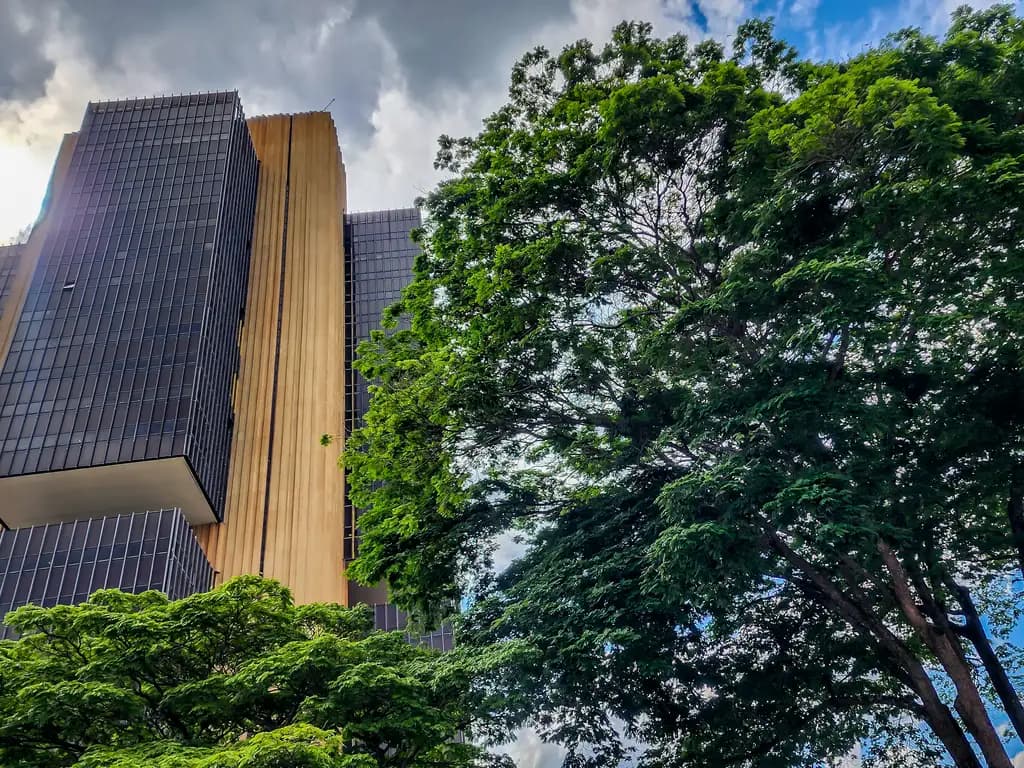Latin Lawyer Reference: Merger Control 2016 - Brazil
Reproduced with permission from Law Business Research Ltd. This content was first published in LATIN LAWYER Reference - Merger Control 2016. For further information please visit http://latinlawyer.com/reference/topics/54/jurisdictions/6/brazil/.
Applicable legislation and the competent authorities
1.What is the legislation applicable to merger control and how long has merger control legislation been in force?
The first merger control legislation in Brazil was enacted by Law No. 8,158/91, which created the then National Secretariat of Economic Law. This Law was later replaced by Law No. 8,884/94, which coincided with the country’s transition to a market-based economy. Then, in May 2012, Law No. 12,529/2011 (the Antitrust Law) took effect and introduced key changes to the previous system, including a new institutional framework, a mandatory pre-merger notification system and new filing thresholds. The Administrative Council for Economic Defence (CADE) may issue resolutions to regulate specific aspects of the merger control system; key merger control resolutions are:
- Resolution No. 02/2012, which provides (i) the short and standard filing forms; (ii) the definition of economic group for purposes of the calculation of the relevant turnover for determining the need for a filing; (iii) transactions eligible for the fast-track proceeding; and (iv) rules governing notifications regarding bonds, debentures and other securities convertible into shares;
- Resolution No. 10/2014, which establishes rules for determining the need for a filing in case of associative contracts; and
- Resolution No. 13/2015, which establishes rules for gun-jumping investigations and for the determination of the filing of transactions that do not meet the statutory thresholds.
Finally, under CADE’s internal regulations, CADE shall issue a binding statement after ruling in the same direction at least 10 times. To date, CADE has issued nine binding statements, all but one related to merger review (the great majority still under the previous competition law). CADE has not yet issued horizontal merger guidelines under the current regime and it generally resorts to the guidelines issued by the former Secretariat of Economic Law (SDE) and the Secretariat for Economic Monitoring (SEAE) in 2001. No major changes to the legislation are currently being discussed.
2.Is there any additional sector- or industry-specific merger regulation legislation?
Additional sector legislation applies to regulated industries such as energy, oil and gas, banking and telecoms, which are enforced separately by regulatory agencies. These sector-specific rules may establish that certain mergers (eg, transfers of control) are subject to review by the regulatory agency as well (eg, Law No. 9,472/1997 sets forth the rules that apply to the telecoms sector). There has been a long-running controversy between Brazil’s Central Bank and CADE to determine which agency has jurisdiction to enforce competition rules in the financial sector. Transactions that fulfil the thresholds provided by each agency must be filed with each of those agencies for antitrust review. This controversy will only be solved through the issuance of new legislation.
3.Are parties that are required to file notification of a transaction pre-closing obliged not to close their transaction pending regulatory review?
Under the Antitrust Law pre-closing notification and approval is required. The Reporting Commissioner may allow parties in complex cases to close the transaction before CADE’s clearance. Such closing, however, is subject to conditions related to limitations on asset settlement, closing of stores or productive units, integration of activities, dismissal of employees, termination of brand or product lines and alteration of marketing plans. We are not aware of any case where CADE has resorted to this provision to date. Please note that transactions carried out in the over-the-counter or in the stock exchange markets do not require CADE’s clearance to be completed. However, political rights related to the acquired shares shall not be exercised by the buyer before CADE′s approval, unless exceptionally authorised by CADE to allow the buyer to preserve its investment.
4.Where pre-closing notification and approval is required, can a transaction that has been approved be challenged after closing? Has this ever happened?
Decisions by CADE’s Directorate General for Competition (DG) (see question 5) can be challenged before the Tribunal by third parties within 15 days after the decision was made public. Decisions by CADE’s Tribunal are final at the administrative level and are subject to judicial review only. Moreover, according to article 91 of the Antitrust Law, CADE can revise its decision in the following circumstances: (i) the decision was based on false or misleading information provided by the parties; (ii) there was a failure to comply with the obligations established by the authority; or (iii) the alleged efficiencies were not achieved. In 2013 CADE decided, based on article 91, to reassess a joint venture cleared in 2007 in view of alleged failures to comply with the obligations established by the authority. The revision process has not yet been finalised and the parties are challenging its legality (see Merger Case No. 08012.001015/2004-08).
5.Who are the authorities responsible for merger enforcement and how is responsibility for investigation and decision-making allocated between authorities or within an authority?
The investigative, prosecutorial and adjudicative functions are consolidated into one independent agency: CADE, which includes a Tribunal composed of six commissioners and a president, the DG and an economics department. With respect to merger enforcement, the DG is responsible for clearing simple transactions and challenging complex cases before the Tribunal, while CADE’s Tribunal is responsible for adjudicating complex cases challenged by the DG, by the Tribunal itself or by third parties.
Time frames
6.Identify the last three times merger control legislation was used to prohibit a transaction, and for each, provide the ultimate outcome.
Merger Case No. 08700.004054/2012-19; the acquisition by Brazilian steel processor Armco Staco of the guard rails and galvanised steel units of Brazilian reroller Mangels Industrial. CADE considered that the transaction would result in a 70 per cent combined market share and considerable economic market power in the market of guard rails. CADE blocked the transaction on 9 October 2013.
Merger Case No. 08700.00436/2014-27; the acquisition by Braskem S/A of Solvay Indupa. The companies were the only producers in the Brazilian market of suspension PVC and Emulsion PVC. CADE considered that the transaction had the potential to give considerable market power to the parties in the affected market. CADE blocked the transaction on 12 November 2014.
Merger Case No. 08700.009988/2014-09; the acquisition by Tigre S/A – Tubos e Conexões of Condor Pincéis Ltda. The companies were players in the paint accessories market. CADE considered that the post-transaction market would have high entry barriers and extremely low rivalry and that efficiencies argued by the parties to offset the potential anticompetitive effects would not be enough to remove the concerns. CADE also rejected the parties’ allegations that imported products would substantially reduce the parties’ market power.
To the best of our knowledge, there were no appeals pending in court on any of these decisions as of 25 November 2015.
7.With respect to notifiable transactions that do not raise obvious competition concerns, what is the expected time frame from notification to a decision?
Twenty days is the average review time for fast-track cases and CADE’s DG self-imposes a target of reviewing these simpler cases in no later than 30 days.
8.With respect to notifiable transactions that raise obvious competition concerns, what is the expected time frame from notification to a decision?
According to CADE’s report of its activities, published in May 2015, three years after Law No. 12,529/11 took effect, the average review period for cases that are not eligible for fast-track is 84 days. Cases considered complex by the DG may take six to nine months to be reviewed. The maximum review period provided in the law is 330 calendar days and the longest period parties have had to wait for a final decision to close the transaction was 324 calendar days (Merger Case No. 08700.009924/2013-19 – Videolar/Innova). Where CADE is happy with the proposed remedies submitted along with the notification, the agency may clear complex cases in a shorter time frame. For example, in Merger Case No. 08700.007621/2014-42 – Lafarge/Holcim, which was cleared subject to structural remedies, the review period was 98 days from the notification to a final decision.
Notifiable transactions: thresholds
9.Which type of transactions must be notified?
Transactions that amount to an economic concentration, as defined by the Antitrust Law and CADE’s Resolution No. 02/2012 must be notified provided that the turnover thresholds are met and the transaction has effects in Brazil. The statutory definition for concentration acts is broad and encompasses (i) the merger of two or more companies; (ii) the acquisition, directly or indirectly, of sole or joint control of the stock or assets of a given company by another company, even a minority shareholding; (iii) the absorption of a company or companies; or (iv) the formation of a consortium, association or a joint venture. Consortia used for public bids are not considered as concentration acts in terms of the Antitrust Law.
CADE’s Resolution No. 02/2012, as amended by Resolution No. 09/2014 set forth a clear criteria for the determination of whether a filing is required for acquisitions that do not involve change in control. When companies are not horizontally or vertically related, a filing is mandatory when: (i) as a result of the transaction, the acquirer holds at least 20 per cent of the voting or capital stock of the target company; or (ii) in case the party already holds at least 20 per cent of the voting or capital stock, when the party acquires at least 20 per cent more of the voting or capital stock from the same seller. If companies are horizontally or vertically related, a filing is mandatory when (i) as a result of the transaction, the acquirer holds at least 5 per cent of the voting and capital stock of the target or (ii) in case the party already holds at least 5 per cent of the voting and capital stock of the target, whenever the party acquires additional stake of at least 5 per cent.
Resolution No. 02/2012, as recently amended, also provides rules regarding the notification of bonds and securities convertible into stock. A filing is mandatory only if: (i) the percentage of equity to be acquired, once the bonds are converted into equity, meets the type-of-transaction threshold provided in Resolution No. 2/2012 (including the 5 per cent or 20 per cent rule depending on whether the parties are horizontally or vertically related); and (ii) the acquirer has the right to appoint members to the board or to internal control bodies or has voting or veto rights on commercially sensitive subjects, except if those rights are already provided under the applicable legislation.
Pursuant to Resolution No. 10/2014 all associative contracts with a duration exceeding two years where there is a horizontal or vertical cooperation or a risk-sharing arrangement and that lead to an ‘interdependent relationship’ between the contracting parties require antitrust approval if the parties meet the applicable turnover threshold. An interdependent relationship is found:
- between parties that are horizontally related regarding the object of the contract whenever their combined shares in the relevant market affected by the contract is at least 20 per cent; or
- between parties that are vertically related regarding the object of the contract whenever one of the parties holds at least a 30 per cent market share in the vertically related relevant market affected by the contract and at least one of the following conditions is fulfilled: (i) the parties to the agreement share revenues or costs in the context of that specific agreement; or (ii) the contract provides for a formal or de facto exclusive relationship between the parties. If the duration of a contract fulfilling these criteria was initially under two years but later extended to over two years, a filing would also be required.
10.Where change in control is part of the test, what is the standard for defining control and changes thereof for pre-merger notification purposes?
Control is not defined by the Antitrust Law, but CADE’s case law has consistently defined it as the ability to exercise decisive influence on a company. Each case is decided on its facts and CADE usually considers the existence of shareholder agreements, board representation, and ownership. Joint control is usually characterised when two or more shareholders need to reach a common understanding to determine the strategic commercial decisions of the target.
11.What thresholds apply for determining whether a transaction must be notified?
The Brazilian Antitrust Law provides for minimum size thresholds, which take into account the parties’ total revenue in Brazil. Pursuant to the Ministries of Finance and Justice Joint Resolution No. 994/2012, one party must have Brazilian revenues of at least 750 million reais in the last fiscal year, while the other party must have revenues of at least 75 million reais. For the purposes of calculating whether thresholds are met, both acquirer and seller, including their respective economic groups, should be taken in consideration.
CADE’s Resolution No. 02/2012 establishes that the following entities shall be considered as part of the same economic group for the purposes of determining whether a filing is mandatory:
- entities subject to common control; and
- all the companies in which any of the entities subject to common control holds, directly or indirectly, at least 20 per cent of the voting or total capital stock.
In case the transaction involves private equity, the turnover of the following entities shall be taken into account:
- the economic group of each entity that holds 50 per cent or more of the fund; and
- portfolio companies controlled by the fund or in which the fund holds 20 per cent or more of the total or voting capital.
Regarding the "effects" test, see question 12.
Finally, under the clawback provision in the current statute and CADE's Resolution No. 13/2015, CADE may review transactions that fall outside the merger thresholds within one year of its closing.
12.In what conditions must transactions between foreign companies be notified?
Transactions between foreign companies must be notified to CADE, provided the nature of the transaction so requires and the turnover thresholds are met, whenever it is wholly or partially performed within Brazil or, if performed abroad, it may produce effects in the country. This will be the case if the target in a given transaction has direct or indirect activities within the country. Direct activities are achieved through, for example, a sales representative, local subsidiary or distributor. Indirect activities are most frequently established through export sales into the country. Still, a scenario in which CADE would consider third-party sales (eg, via a licensing agreement) as evidence of indirect activities in Brazil cannot be ruled out.
CADE’s case law does not provide objective criteria for the application of the effects test. CADE has occasionally cleared a transaction that was subject to mandatory review because the parties fulfilled the turnover threshold, even though the target had no activities in Brazil (eg, Merger Case No. 08012.002945/2012-81, in which the target was an international airport in Curaçao). In March 2013, while adjudicating another case, CADE’s DG decided the case was not subject to mandatory review because the transaction had no effects in Brazil as (i) the scope of the geographic market was local; (ii) the target did not operate in Brazil; and (iii) there were no vertical or horizontal relationships between the parties that could affect Brazil (see Merger Case No. 08700.001204/2013-13). More recently, in January 2014, parties to a transaction claimed their case did not require antitrust approval in Brazil, despite the fact that they fulfilled the turnover threshold. The central argument was twofold: (i) the target sales into or in Brazil were negligible when compared with the size of the Brazilian and worldwide markets; and (ii) no horizontal overlaps or vertical integration arose from the transaction. Nonetheless, the DG concluded that a filing was necessary and that any discussion on the competition impact (assuming there is one under the effects test, be it positive, neutral or negative) is related to the merits of the case and, therefore, shall not be considered for the purposes of determining the need for a filing (see Merger Case No. 08700.011324/2013-10). On the other hand, in December 2014, a case was dismissed by the DG based on the effects test, in which the parties had significant turnover in Brazil (above the thresholds) but the joint venture that was target had no activities at all in Brazil (see Merger Case No. 08700.008819/2014-43). CADE’s Tribunal has not yet positioned itself regarding the scope of the effects test under the new regime and has not reviewed any of the DG’s decisions on the issue.
Notification procedure, timing and penalties for non-compliance
13.Who must file the notification?
Under CADE’s Internal Rules, whenever possible the following companies should file the notification: (i) the acquirer and the target in acquisitions of control or shareholding; (ii) the merging entities in a merger; and (iii) contracting parties in the remaining cases.
14.Are there filing fees?
There is a 45,000 reais filing fee that is allocated entirely to CADE and that will be raised to 85,000 reais in January 2016. All parties to the transaction are responsible for the payment of the filing fee; however, there are no rules as to how the fee amount should be allocated between the parties.
15.Is there a standard form? How long does it take to prepare a filing? What type of information is generally required?
Notification is made through the standard of the short filing form, as provided by CADE’s Resolution No. 02/2012. (see www.cade.gov.br/upload/Resolu%C3%A7%C3%A3o%202_2012%20-%20An%C3%A1lise
%20Atos%20Concentra%C3%A7%C3%A3o.pdf).
Both forms require information about the transaction, the parties and their economic groups, the relevant market(s), main suppliers and consumers as well as the remaining players of the affected market. The standard filing form requires more detailed information about the market, its main players and the effect of the transaction in the relevant market. The information needed to prepare a short form is relatively straightforward. The standard form, on the other hand, typically requires a substantial amount of market analysis.
On a case-by-case basis, the DG may accept standard filing forms with less than the required information if it believes it already has all the information needed to conduct its assessment – when, for example, the parties have already presented a commitment proposal jointly with the filing.
16.When must notification be made? Is there a triggering event that requires a filing to be made within a specified period?
While there are no statutory deadlines for filing or triggering events, CADE, prefers the parties to file the transaction following the execution of a binding agreement (see article 108 of CADE’s Internal Rules).
17.Is there a pre-notification requirement or custom whereby a draft notification is submitted first to the authority for comments and questions to be addressed before formal notification is made? How does that work in practice and what are the risks of submitting a formal notification without this step?
There are no pre-notification requirements, but, pursuant to article 114 of CADE’s Internal Rule of Proceedings, the parties may informally approach CADE to discuss complex cases before the notification of cases that are not subject to fast-track review. Usually, this approach is made in few cases where relevant antitrust concern from the authority is expected. Draft versions of the notification form can be exchanged and remedies can be discussed in advance. There is no substantial risk of submitting transactions without previously contacting the authority, but it tends to expedite and ease the merger review in most complex cases.
18.When must notification be made with respect to acquisitions of convertible non-voting securities or options? (Explain whether these acquisitions must be notified at time of acquisition or before actual exercise or conversion.)
See question 9.
19.Where there is an obligation not to close the transaction pending review, is there any alternative available to allow closing before formal clearance? Is there any guidance from the authority as to how the parties should conduct business between signing and closing?
See question 3. In 2015 CADE issued guidelines on gun jumping (available at http://www.cade.gov.br/upload/Guia%20gun%20jumping-%20vers%C3%A3o%20final%20(3).pdf), which, among other things, define (i) gun jumping and the activities that can lead to it; (ii) specific procedures to mitigate the risk of a violation; and (iii) the applicable fines.
Exchange of information
CADE recognises that some level of information exchange must take place, but provides that exchanges may be considered abusive when involving segregated/specific information directly addressing the core-business performance of the companies, including, inter alia, costs, capacity and expansion plans, marketing strategies, pricing, clients and suppliers.
Adoption of “clean teams”, the aggregation/anonymising of data and the use of historical data are cited as possible measures to mitigate the risk of gun jumping. Particularly for complex transactions, CADE recommends that the parties adopt an “Antitrust Protocol” establishing specific clean team procedures for restricting manager, employee or company representatives of one company having access to the competitively sensitive information of the other until the closing of the transaction.
Prohibited activities prior to/during the implementation of the transaction
Full or partial completion acts are prohibited at this stage. Examples in the guidelines include: joint product development, interruption of investments, influence the other party in commercial decisions, and alignment of strategies.
Rules on contract clauses
Contract provisions must set forth that competitive conditions shall be unaltered, preventing premature integration of the parties’ activities or any influence of one party over the other’s business, until a final clearance or until the fulfilment of the conditions imposed by CADE. Clauses that result in the reduction of competition between the parties within this time period are prohibited. Other potentially problematic contract provisions include those that establish non-compete rules and certain payment conditions (eg, anticipated and non-refundable payment of a consideration for the object of the transaction).
Applicable sanctions
Penalties for gun jumping include fines ranging from 60,000 reais to 60 million reais and the transaction may be declared null and void. Competitors that coordinate their competitive activities or engage in detailed information exchanges can also be investigated for cartel conduct, subjecting the parties to fines from 0.1 per cent to 20 per cent of a company’s (group of companies’ or conglomerate’s) gross revenues generated in the “sector of activity” affected by the infringement in the year prior to the initiation of the investigation.
20.What is the timeline for review and clearance?
The maximum review period is 330 calendar days from the day the filing is considered to be complete. Transactions are initially reviewed by the DG, which issues final decisions for cases that do not raise serious competition concerns. Transactions reviewed under the fast-track proceeding are cleared, on average, in 20 days.
For transactions that have been made public, CADE’s DG has been requesting that the parties issue waivers allowing them to informally contact customers, suppliers and competitors to take their views on the proposed transaction. Cases for which the parties are required to submit the standard notification form have been cleared on average in 84 days after formal filing. (See question 17.)
When the DG recommends that a transaction is blocked or approved subject to remedies, CADE’s Tribunal will necessarily issue a final ruling on the case. The DG’s policy in these cases has been to conclude its review and forward the files to the Tribunal in up to 165 calendar days to allow CADE to have the same amount of time to review the transaction.
21.Are there post-clearance obligations imposed on the parties for a clearance decision to remain valid?
The Antitrust Law does not provide post-clearance obligations for a clearance decision to remain valid. Still, CADE may impose remedies (either structural, behavioural, or both) as a condition for clearance CADE’s Attorney General Office is in charge of monitoring the parties’ compliance with CADE’s decision.
22.Is there a simplified notification procedure with accelerated review periods? What type of transactions qualify?
Under CADE’s Resolution No. 02/2012, as amended, the following transactions are eligible for fast-track review: (i) the formation of non full-function joint ventures; (ii) transactions not involving horizontal overlap or vertical integration; (iii) in case of horizontally related parties, where the parties have a combined market share of up to 20 per cent; (iv) in case of vertically related parties, where the parties hold a market share of up to 30 per cent in any of such markets; (v) horizontal mergers resulting in a Herfindahl-Hirschman Index variation below 200, as long as the transaction does not result in the control of more than 50 per cent of the market; and (vi) other cases at the discretion of the authorities. Although accelerated review periods are not provided by the law or applicable regulation, in practice transactions eligible to be reviewed under the fast-track process are cleared on average in 20 days.
23.Are there special rules applicable for public takeover bids, private equity transactions or for corporate restructuring under bankruptcy procedures?
See questions 9 and 11.
24.Can the authority be consulted on a no-names basis for guidance on notification requirements? Is this practice useful?
In March 2015 CADE issued a resolution that allows parties to consult the agency for on notification requirements regarding certain transactions or de facto hypothesis. However, consultations on a non-names basis are not allowed.
25.What are the risks if the parties do not file, if the transaction is closed before clearance or if notification is untimely? What type of behaviour can be considered gun-jumping? What sanctions can be imposed and on whom? What is the highest fine imposed to date for failure to file or gun-jumping?
The completion of a transaction prior to clearance from CADE (gun jumping) may subject parties to fines ranging from 60,000 reais to 60 million reais and the transaction may also be declared null and void by the authority. Moreover, CADE can investigate the parties for antitrust violations, subjecting them to fines ranging from 0.1 to 20 per cent of a company’s (group of companies’ or conglomerate’s) gross revenues generated in the sector of activity affected by the violation in the year before the commencement of the investigation, among other sanctions. Sanctions can be imposed against all parties to the transaction.
There is no provision in the law or in CADE’s regulation on the types of behaviour that can be considered gun-jumping and there are limited rulings on this topic. However, CADE has recently published non-binding gun-jumping prevention guidelines and it lists the activities that may be seen as gun-jumping. (See question 19.)
The most informative decision on gun-jumping was issued by CADE in 2013 (see Merger Case No. 08700.005775/2013-19). The report issued by CADE’s DG lists the following elements as evidence of gun jumping: (i) a provision in the agreement that provided that it would have entered into force before the date of the execution of the agreement; (ii) the absence of a contractual clause that set forth prior clearance from CADE as a condition precedent; (iii) as well as that, prior to CADE having approved the transaction, (a) commercially-sensitive information had been exchanged between the parties; (b) the buyer had taken part in management decisions regarding the target company; and (c) the payment of the transaction’s price had been made. The highest fine imposed to date for gun jumping was 3 million reais.
Under article 113 of CADE’s Internal Rules the agency may initiate an investigation in cases the parties have failed to submit a notifiable transaction. Such proceeding may be initiated by the DG ex officio or based on a complaint by a third party.
The review process, confidentiality and the role or influence of third parties
26.What are the investigative powers of the authority?
CADE has broad investigative powers and can require production of information in different forms, including interviews and disclosure of internal company documents (e.g., documents prepared for the board and reports and strategy papers prepared during the negotiation of the deal). During its review, CADE may also issue questionnaires about the market and the potential effects of the transaction to competitors, consumers and suppliers and also conduct market tests on proposed remedies.
27.Are there confidentiality rules to protect sensitive proprietary information provided to the authority and what procedure must be followed for confidentiality to apply?
While CADE’s proceedings are public, parties can request confidential treatment for sensitive information in the filing documents. Article 53 of CADE’s Internal Rules provides guidance on what type of information can be considered confidential, such as turnover of the parties, value of the transaction, production costs, identity of clients and suppliers. Article 54 of CADE’s Internal Rules also lists the information that will not be considered confidential, such as the shareholding structure of the parties and their respective economic groups, products or services offered and market data related to third parties. Requesting confidential treatment of information that is public can subject the parties to fines (articles 40 or 43 of the Antitrust Law).
28.Is notification and its content publicised?
CADE’s DG publishes a non-confidential summary of the transactions at Brazil’s Official Journal, which starts the clock for third parties to eventually challenge the transaction (see answer to question 30). The DG also publishes its decision to clear or to challenge the transaction before CADE’s Tribunal in Brazil’s Official Journal. In all cases, the parties need to present before CADE a non-confidential version of the notification, which will be made available to any third party.
29.Are there agreements in place to exchange information with foreign competition authorities? Must the authority seek a waiver from the transaction parties to disclose confidential information submitted in their filing?
CADE has entered into cooperation agreements with the United States’ Department of Justice, the European Commission, Argentina, Canada, Chile, China, Colombia, Equator, France, Japan, Korea, Peru, Portugal and Russia. These are first-generation agreements and only allow for the exchange of non-confidential information. It may, however, seek waivers from parties to exchange confidential information submitted in the filing with foreign authorities.
CADE sought cooperation with foreign authorities, for example, for the first two merger control agreements executed under Brazil’s New Antitrust Law (see Merger Cases No. 08700.006437/2012-13, and 08700.009882/2012-35). The two transactions were also submitted to the European Commission. CADE has also exchanged information with foreign authorities in cases where there is a common trustee in charge of monitoring the divestment required by CADE to clear the transaction (see Merger Case No. 08700.007621/2014-42). Cooperation between CADE and the EC, which was preceded by a waiver given by the merging parties, allowed authorities to discuss remedies in a coordinated manner, resulting in an effective divestiture process.
30.As a matter of practice, how do the authorities investigate a transaction? Whom do they consult? What weight, based on your experience, does the authority give to the information provided?
When investigating a transaction CADE will request additional documents and information from the notifying parties or issue questionnaires to third parties (competitors, consumers and suppliers), or both. While it is more common that this happens in reviews of transactions filed using standard filing forms, on occasion CADE also conducts additional investigation in fast-track cases. Typically, CADE will take into account information submitted by third parties particularly if it sheds light on new aspects of the transaction that it was unaware of, or if contradicts any statement by the transaction parties. In such situation, CADE would conduct further review following such responses.
31.What rights do third parties such as competitors, suppliers or customers have to intervene and participate in the investigation process, including rights to access the investigation file?
Third parties can request to be accepted as an ‘interested third party’, in which case they can directly participate in the review process by preparing submissions (eg, expert opinions, market tests, interviews, documents) that CADE will take into account in its review. Interested third parties can also appeal clearance decisions made by the DG to CADE’s Tribunal (see question 31). Moreover, CADE’s proceedings and case records are public, and any third parties also have the right to access the public version of the case files.
32.Can third parties appeal clearance decisions, and has this ever happened successfully?
According to article 122 of CADE’s Internal Rules, third-parties can appeal clearance decisions only if they have been previously accepted as interested third party (see article 118 of CADE’s Internal Rules). Appeals to CADE’s Tribunal must be filed within 15 days after the decision is published in Brazil’s Official Journal.
Decisions by CADE’s Tribunal are final at the administrative level and can only be reviewed by judicial courts.
Since 2012, this has happened only a few times (Merger Case No. 08700.001945/2014-77 (Banco do Brasil/Correios); and Merger Case No. 08700.009465/2014-54 (T.C.P., T.C.S/ Monts Holdings). In the latter, the Parties withdrew the clearance request before the adjudication of the appeal and the case was dismissed. In the first, the transaction referred to an agreement between the parties to expand the operations of Banco Postal and to create a financial institution to be controlled by both parties. The National Association of the Deliverymen of Small Packages and Printed Matter appealed the DG’s clearance decision claiming the transaction could harm private companies that operate in the market of small express shipments. CADE’s Tribunal confirmed the DG’s decision and cleared the transaction on 30 April 2014.
33.In a transaction that appears to raise competitive concerns, is it recommended to consult the authority prior to filing and, if so, why?
Pre-notification contacts with the DG are possible only in transactions that are not eligible for the short filing form (see questions 17 and 19).
34.Do the authority and its staff share their concerns about a transaction with transaction parties at each stage of review? How can parties productively participate in the evaluation and decision processes?
Typically, CADE shares its concerns with the parties throughout the investigation in meetings and telephone calls. Parties can also participate in the decision-making process by preparing submissions throughout the review. Moreover, for transactions that could potentially raise competitive concerns parties may also engage in pre-notification contacts with the DG. That allows parties to present the case and to consider beginning negotiations on possible remedies to solve perceived competition issues.
Substantive analysis and remedies
35.Are there published guidelines for merger analysis?
No revised merger guidelines were issued after the Antitrust Law took effect. CADE has been taking into account the case law and regulations under the previous law, including the SDE and SEAE Horizontal Merger Guidelines (available at www.cade.gov.br/upload/2001portariaConjunta50-1_guia_para_analise_economica
_de_atos_de_concentracao.pdf), which set forth a traditional merger analysis.
36.What are the prevailing theories of competitive harm and analysis, and how are they typically applied?
The Antitrust Law contains both a dominant position and a lessening or restriction of competition test. Mergers have been reviewed under the former SDE and SEAE Horizontal Merger Guidelines (see question 34). Case law issued under Law No. 8,884/94 and the EC guidelines and practice have guided CADE’s decision-making process.
Both unilateral and coordinated effects are taken into account in the review process. Historically, concentration levels and market shares are important but CADE may make a fact-specific inquiry looking at other factors, including scope of competition between the merging parties and customer switching patterns, as well as prior similar mergers. Vertical issues are increasingly being raised during the review.
37.Are there safe harbours and what are they?
The law presumes a market power to exist if the parties jointly hold a share of at least 20 per cent of the market. The Horizontal Merger Guidelines describe threshold levels of market concentration that raise concerns about the possible exercise of market power in one of two ways: (i) by a single firm unilaterally, when that firm has a market share of at least 20 per cent; or (ii) through coordination of firms (collective dominance) in a market in which the four-firm concentration ratio is at least 75 per cent and the resulting firm has a market share of at least 10 per cent. If the market concentration exceeds either of those levels, CADE proceeds to step three. The guidelines do not explicitly adopt the Herfindahl-Hirschman Index as a measure of concentration but CADE usually uses it, following the US or the EC standards.
38.To what extent are economic efficiencies and non-competition issues taken into account in the review process?
CADE traditionally follows a five-step review process provided in the Horizontal Merger Guidelines consisting of: (i) definition of relevant market; (ii) determination of the parties’ market share; (iii) assessment of the probability of the parties exercising market power following the transaction; (iv) examining the efficiencies; and (v) evaluating the net effect on welfare. Based on this review process, the authorities will consider whether perceptible efficiencies resulting from the merger are likely to reduce or reverse adverse effects arising from the transaction. It is incumbent upon the merging firms to substantiate efficiency claims so that CADE can verify by reasonable means the likelihood and magnitude of each asserted efficiency, how and when each would be achieved, how each would enhance the merged firm’s ability and incentive to compete, and why each would be merger specific.
CADE’s case law shows that efficiencies arguments have limited weight in the agency’s decision-making process. Historically, whenever CADE has reached item (iv), the transaction was either blocked or cleared subject to substantial remedies.
Non-competition issues such as industrial policy or public interest are traditionally not factored into the review process.
39.Can remedies be negotiated, and, if so, at what stage in the process? How are they enforced?
Yes, parties can negotiate undertakings with CADE to remedy perceived competition issues. Such undertakings can be offered by the parties from the day of the filing up to 30 days following the challenge of the transaction by the DG.
40.How common are negotiated remedies? Can negotiated remedies be challenged by third parties?
Since May 2012, CADE has cleared around 30 transactions subject to conditions, some of them negotiated remedies. Some recent examples include the mergers between Lafarge and Holcim (see Merger Case No. 08700.007621/2014-42) and ALL and Rumo (see Merger Case No. 08700.005719/2014-65), which were cleared by CADE respectively in December 2014 and February 2015 subject to the execution of commitment letters. Once a commitment letter has been executed, a third party can no longer challenge it before CADE but only before judicial courts.
41.Is there a vehicle for reconsideration by the authority of its decision? If so, please describe and provide recent examples where reconsideration led to a revised outcome.
According to article 222 of CADE’s Internal Rules, parties can request the Tribunal to reconsider its decision based on a new fact or document that would allow the parties a more favourable decision. New documents or facts are those that are pre-existing but of which the parties only became aware after the adjudication or those that the parties knew of, but of which they were demonstrably unable to make use. See also question 4.
Judicial review
42.Can a decision from the regulator be appealed and if so what is the timetable for judical review to take place?
CADE’s decisions are final within the executive branch but are subject to judicial review by the general first instance court judges. Litigation usually involves high costs and it is time consuming, as it can take over a decade to reach a final decision.
43.What has been the most important challenged decision in the past five years that has been overruled and how often generally do appeals result in reversal?
None of CADE’s merger control decisions have been overruled by the Judiciary in the past five years. In fact, under the pre-merger review system in place since 2012 appeals to the court have become rare. Moreover, courts have confirmed over 70 per cent of the decisions issued by CADE in merger control and conduct-enforcement cases.
44.When reviewing decisions from the competition authority, do courts restrict themselves to procedural aspects, or can they review the substance of the authority’s analysis?
CADE’s decisions lack collateral estoppel effect, and even after a final ruling has been issued by the agency, all the evidence of the administrative investigation may be re-examined by the judicial courts, which could potentially lead to two opposite conclusions (administrative and judicial) on the same facts.
Case law
45.Briefly highlight any notable merger control decisions rendered over the past 12 months.
Merger Case No. 08700.004185/2014-50. Continental Aktiengesellschaft, an auto parts maker, acquisition of Veyance Technologies, Inc., a rubber and plastics maker, was cleared by CADE subject to the divestment of two manufacturing plants, one in Mexico and another in Brazil, in an agreement that incorporated part of the commitments already made with the US authorities and included additional ones.
Merger Case No. 08700.005719/2014-65. Rumo Logística Operadora Multimodal SA, the logistic arm of the Cosan Group, takeover of ALL – América Latina Logística SA was cleared by CADE after 16 entities having challenged the deal. The clearance was given subject to several behavioral commitments that addresses concerns on the vertical integration between Cosan’s sugar and port warehousing activities and ALL’s railway operator activities.
Merger Case No. 08700.009731/2014-49 Telefônica SA was granted conditional approval of its intended takeover of GVT, subject to the adoption of structural and behavioral remedies, mainly related to the shares held by Telefônica Group in Telecom Italia, controller of TIM, a competitor of Telefônica and GVT in the Brazilian telecom sector.
Merger Case No. 08700.009988/2014¬-09 CADE rejected proposed acquisition of Condor Pincéis by Tigre. The companies are players in the paint accessories market. CADE considered that the post-transaction market would have high entry barriers and extremely low rivalry and that efficiencies argued by the parties to offset the potential anticompetitive effects would not be enough to remove the concerns. CADE also rejected the parties’ allegations that imported products would substantially reduce the parties’ market power.
46.Update and trends
Merger enforcement has been more rigorous under Brazil’s new suspensory regime. On recent reviews of complex cases, CADE’s DG has tended to recommend divestitures to remedy alleged anti-competitive effects arising post-merger. Once the files reach the Tribunal, the agency has been more open to consider hybrid or conduct-based remedies in a number of cases.
Overall, CADE appears to acknowledge that it is more important for authorities to identify competition concerns under a given theory of harm, rather than to be ingenuous in crafting appropriate remedies, and has been willing to consider alternatives presented by the merging parties. Such flexibility has been particularly useful in multi-jurisdictional transactions, as it allows remedies to be implemented consistently worldwide.
CADE has also been more concerned about gun-jumping prevention. Examples of that are the issuance of a gun-jumping prevention guideline, and recent findings of violations when reviewing two cases in 2015.






























